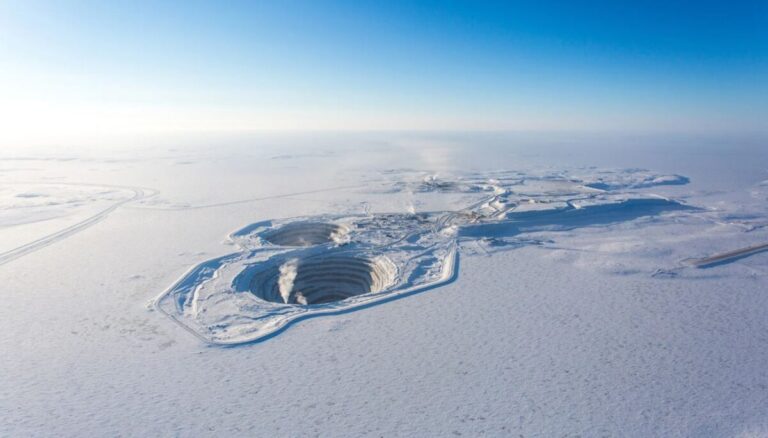Multinational mining company Rio Tinto has completed installation work at the Diavik Diamond Mine in Canada and announced plans for two 5.25 MW plants at a bauxite mine in Australia’s Northern Territory.
Rio Tinto has completed a 3.5 MW solar power plant in Canada’s Northwest Territories, which the multinational mining company claims is the largest off-grid solar facility in the country’s territories.
Located at Rio Tinto’s Diavik diamond mine, approximately 220 km south of the Arctic Circle, the site is equipped with 6,620 modules, which Rio Tinto expects to generate 4.2 GWh per year. Rio Tinto chose to install two-sided modules in an attempt to take advantage of the albedo of the snow that covers Diavik for most of the year.
It is expected that the solar power plant will be able to supply up to 25% of the Diavik mine’s electricity needs during the closure works. Commercial production at the mine is expected to end in 2026 and closure works are expected to last until 2029.
The installation was also supported by government funding. Funding of CAD3.3 million ($2.4 million) was secured from the Government of the Northwestern Territories through its Large Emitters GHG Reducing Investment Grant Program. Rio Tinto’s Diavik factory is the first project in the Northwestern Territories to benefit from funding from the grant scheme, which sets aside a portion of the carbon tax paid by major companies such as Diavik to support projects that commit reduce greenhouse gas emissions in the area. .
The diamond mine solar power plant will join an existing 9.2 MW wind power plant that has been operating in Diavik since 2012 and is the largest wind power facility in northern Canada, according to Rio Tinto.
Rio Tinto’s progress at Diavik coincided with the company announcing plans to install two 5.25 MW solar farms at a mine in Australia. Both plants will be installed at Rio Tinto’s Northern Territory Grove Peninsula bauxite mine, which is expected to close by the end of the decade.
British renewable energy company Aggreko will build, own and operate both solar farms at the Rio Tinto Gove site for up to ten years. Construction work is expected to begin in late July 2024 with a target completion date of 2025. The solar power plants will be built on Australia’s First Nations Gumatj and Rirratjingu Country under leases from Rio Tinto.
Popular content
Shannon Price, acting general manager of Rio Tinto Gove Operations, said the solar project is part of a “shared vision” among the land’s First Nations owners to leave a “positive legacy” when the bauxite mine closes with surgery.
“We are pleased to partner with the Gumatj and Rirratjingu clans to provide an opportunity to secure alternative sources of electricity generation in their countries and to discuss opportunities to commercialize energy infrastructure in the future,” said Price.
This content is copyrighted and may not be reused. If you would like to collaborate with us and reuse some of our content, please contact: editors@pv-magazine.com.


